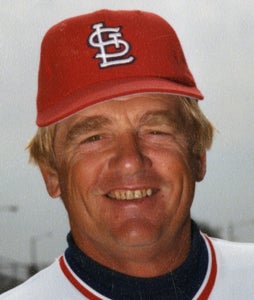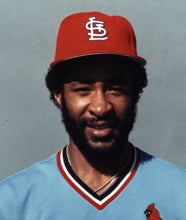- Home
- Our Stories
- #CardCorner: 1985 Topps Andy Van Slyke
#CardCorner: 1985 Topps Andy Van Slyke
Andy Van Slyke was traded for a beloved Pittsburgh Pirates catcher on the eve of the 1987 season, sending shockwaves through the Steel City and leaving many fans questioning the direction of the franchise.
Three years later, the Pirates embarked on a stretch of three straight National League East titles. And Van Slyke became as big a fan favorite as any athlete in recent Pittsburgh history.
Born Dec. 21, 1960, in Utica, N.Y., and raised in the nearby suburb of New Hartford – located about 40 miles from Cooperstown – Van Slyke, whose father was the New Hartford Town Justice for many years, was a star high school athlete who excelled in basketball and baseball. Considered one of the finest prep basketball players ever to come out of the area, Van Slyke opted for baseball – a sport more fitting for his 6-foot-1 frame.
“I’d play in the driveway at night, in the ice and snow,” Van Slyke told the Louisville Courier-Journal in 1983. “You had to use two basketballs: Keep one warm, then switch when the other one went dead from the cold. I think I could have played Division I, but professional baseball is what I want to do.”
Van Slyke, with his classic left-handed swing, hit .384 during his senior season and compiled a stretch of 44 steals in 44 attempts before suffering a broken right wrist in a collision at first base in his final game – one day after the Cardinals took him with the sixth overall selection in the June 1979 MLB Draft.
“It happened on my last at-bat in the bottom of the seventh,” Van Slyke told the Courier-Journal. “We were behind 5-3. I hit a pea to the second baseman, and it banged off his head and went to the pitcher. He picked it up and threw to the first baseman, a big 6-foot-5 guy who didn’t know what he was doing. He crossed right into my path and I fell and broke my wrist. At the age of 18, I went from the most exciting natural high of my life to one of the lowest periods in a matter of 48 hours. It taught me a lot in a short time. I grew up pretty quick.”
The Cardinals quickly signed Van Slyke and sent him to Johnson City of the Appalachian League – but the wrist injury prevented him from appearing in any games. He was assigned to Class A Gastonia of the South Atlantic League in 1980, and he held his own there as a 19-year-old, hitting .270 with eight homers, 59 RBI and 19 steals in 126 games.
Promoted to Class A St. Petersburg of the Florida State League in 1981, Van Slyke battled injuries – including a dislocated elbow – and hit just .220. One late night at home plate at Al Lang Field, Van Slyke had an epiphany.
“When I was playing for St. Pete, I was struggling, not just on the field but off the field as well,” Van Slyke told United Press International. “I was trying to make baseball my whole life, and when I wasn’t doing well I’d get so depressed I wouldn’t know what else to do. It almost destroyed me.”
Van Slyke rededicated himself to his faith that night. The Cardinals moved him along to Double-A Arkansas in 1982, where he hit .279 with 16 homers, 70 RBI and 37 steals.
The Cardinals added Van Slyke to the big league roster following the 1982 season and went about converting him from center field to third base.
“If I can play third the way a major leaguer is supposed to, it can only help me,” said Van Slyke, whose 1985 Topps card lists him as a third baseman – just three years before he won the first of five Gold Glove Awards for his play in the outfield. “I love the challenge.”
Van Slyke wasn’t in Louisville for long. After hitting .368 with 52 runs scored and 41 RBI in 54 games, the Cardinals brought him to St. Louis. He debuted for the defending World Series champions on June 17, going 1-for-4 with an RBI double against the Cubs. He started regularly for the rest of the season, seeing action at third base, right field and left field and finishing with a .262 batting average, 51 runs scored, eight homers, 38 RBI and 21 steals in 101 games.
“(He’s my) ace in the hole,” Cardinals manager Whitey Herzog said of Van Slyke in Spring Training of 1984. “I’m not worried about him getting a chance to play. Look, someone always gets hurt, don’t they?”
True to his word, Herzog played Van Slyke in at least 30 games at four different positions that year: Right field, left field, third base and first base – while also deploying Van Slyke in 15 games in center field. The situation became more muddled in July when Terry Pendleton was recalled from the minors and immediately got hot at the plate, entrenching himself at third base.
Van Slyke, meanwhile, saw his batting average drop as low as .226 in early September before he rebounded to finish with a .244 average, 50 RBI and 28 steals in 137 games.
“Things aren’t always going to go well for you in life,” Van Slyke told the St. Louis Post-Dispatch during a rough patch. “I can’t worry about whether Whitey has lost confidence in me. The only thing I can worry about is my confidence.”
Van Slyke started on Opening Day of 1985 in center field but quickly shifted to right and stayed there for much of the rest of the season, platooning occasionally with the right-handed hitting Tito Landrum. The Cardinals set the baseball world on fire that summer with their aggressive baserunning as rookie Vince Coleman swiped 110 bags as part of St. Louis’ league-leading total of 314. Van Slyke stole 34 while hitting .259 and setting career highs in runs scored (61), homers (13) and RBI (55).
But he struggled in the postseason, going 1-for-11 in both the NLCS and the World Series while appearing in 11 of the Cardinals’ 13 games. St. Louis won the NL pennant but lost to the Royals in the Fall Classic.
In 1986, the Cardinals and Van Slyke struggled in the season’s first half and Herzog moved Van Slyke around the diamond looking for a spark. He hit .304 from July 1 through the end of the season while playing right field, center field and first base and finished with a .270 batting average with 13 homers and 61 RBI – and posted a 3.3 Wins Above Replacement total, second only on the team to Ozzie Smith.
Entering the offseason, the Cardinals were looking to upgrade at catcher. And a week before the start of the 1987 regular season, the Pirates made four-time All-Star Tony Peña available for the right price.
St. Louis sent catcher Mike LaValliere, pitcher Mike Dunne and Van Slyke to the Pittsburgh on April 1. At the press conference in Bradenton, Fla., announcing the trade, both Peña and Pirates manager Jim Leyland broke down in tears.
The reaction was similarly emotional at the Cardinals’ Spring Training facility in St. Petersburg.
“Andy’s my best friend, and in that regard, I don’t like it,” Cardinals second baseman Tom Herr told the St. Louis Post-Dispatch. “In my mind, he was just on the verge of becoming the great player that everyone thought he was going to be. It doesn’t make any sense.”
The Cardinals, though, benefited from the trade when Pena helped them win the NL East in 1987. Van Slyke joined a Pittsburgh team that was still rebuilding – but quickly showed he was going to be a star.
Starting the season in right field before moving to center – pushing Barry Bonds to left – in late May, Van Slyke hit .293 with 36 doubles, 21 homers, 93 runs scored, 82 RBI and 34 steals in 157 games. Dunne and LaValliere also became huge contributors for the Pirates, who finished the season 80-82.
“This is the opportunity I’ve always prayed for,” Van Slyke told the South Florida Sun Sentinel in Spring Training of 1988.
Leyland was not going to let that opportunity go to waste.
“He’s one of those players who you just write into the lineup,” Leyland said, “and watch him play and enjoy watching him play.”
Van Slyke blossomed into an All-Star in 1988, leading the big leagues with 15 triples while hitting .288 with 101 runs scored, 25 homers, 100 RBI and 30 steals. The Pirates won 85 games and Van Slyke finished fourth in the NL MVP voting while winning his first Gold Glove Award.
“I really believe in 1988 Andy Van Slyke performed better than anybody in the National League,” Leyland told the Fort Myers (Fla.) News-Press, noting that he managed 1988 NL MVP Kirk Gibson while he was in the minor leagues.
But with expectations high in 1989, a rib cage injury knocked Van Slyke out of the lineup for a month from mid-April to mid-May, and Van Slyke and the Pirates never found a good rhythm all season. Pittsburgh finished with a record of 74-88 and Van Slyke hit just .237 with nine homers and 53 RBI.
In 1990, however, the Pirates outfield of Bonds, Van Slyke and Bobby Bonilla became the most celebrated in the game. Van Slyke regularly made diving catches, and his pinpoint throws cut down runners on the bases.
“It’s just phenomenal the catches he made,” Pirates broadcaster Jim Rooker said. “It’s like Elgin Baylor or Dr. J when they make a move on somebody and you ask them how they did it. They don’t know. They just improvise as they go along. That’s how Andy plays the outfield. He can’t get any better defensively. If he can, then he’s transcended the game.”
Van Slyke hit .284 with 17 homers and 77 RBI in 1990 as the Pirates won the National League East for the first time since their World Series season of 1979. But in the NLCS vs. the Reds, Van Slyke hit just .208 as Pittsburgh lost in six games.
The core of the Pirates’ team returned in 1991, however, and once again Pittsburgh won the NL East. Van Slyke, now 30, hit .265 with 17 homers and 83 RBI in his seventh straight season with a 3.3 WAR or better. But the Pirates lost to the Braves in seven games in the NLCS, with Van Slyke hitting .160.
In 1990, Bonilla, Bonds and Van Slyke combined to hit .190 with five RBI in the NLCS vs. the Reds. A year later, the trio hit .200 with three RBI against the Braves.
“It’s simple to explain,” Leyland told the Hartford Courant. “We just didn’t hit.”
Van Slyke struggled somewhat against left-handers in 1991, hitting .195 against southpaws while batting .307 against right-handers. But in 1992, Van Slyke made a concerted effort to take left-handers the other way and hit .297 against them. For the year, Van Slyke totaled 199 hits – best in the National League to go along with his NL-leading 45 doubles – while hitting .324 with 14 homers and 89 RBI. He matched his 1988 awards line by finishing fourth the in NL MVP vote and winning a Silver Slugger Award.
Again facing the Braves in the NLCS, the Pirates took a 1-0 lead in the first inning of Game 7 – Van Slyke’s double set up Orlando Merced’s sacrifice fly – and went ahead 2-0 in the sixth inning when Van Slyke’s single scored Jay Bell. Starter Doug Drabek cruised into the ninth inning, but the Braves rallied for three runs to win the pennant.
Francisco Cabrera’s two-out, two run single to left-center field was closer to Bonds than Van Slyke – and Bonds’ throw was not in time to get Sid Bream. Had the ball been a few feet toward center field, Van Slyke would have made the throw. And the Pirates’ destiny might have been different.
Instead, Van Slyke sat dejectedly on the grass at Atlanta Fulton County Stadium as the Braves and their fans celebrated the pennant.
Bonds and Drabek both left Pittsburgh as free agents following the 1992 season. Bonilla had left after 1991. But Van Slyke signed a three-year contract extension in the spring of 1991 that carried him through 1994 and was worth a reported $12.65 million, making him the fourth-highest paid player in the game.
Without his All-Star teammates, however, Van Slyke could not carry the Pirates alone.
Despite an achy back caused by degenerative discs, Van Slyke continued to hit well in 1993 and was batting .322 on June 14 when he crashed into the center field wall at Busch Stadium while chasing a blast by Erik Pappas that went for a home run after glancing off Van Slyke’s glove. The impact broke his right collarbone, and Van Slyke did not return to the lineup until August. He finished the year hitting .310 with 50 RBI in 83 games.
In 1994, Van Slyke hit just .246 as his chronic back pain began to become more acute. With his contract expired, he signed with the Orioles following the strike but hit just .159 in 17 games before being traded to the Phillies for pitcher Gene Harris. He hit .243 with the Phillies but found no offers following the season.
After inquiring about playing for the Cardinals – and finding no interest – Van Slyke took a job as an analyst on ESPN’s Wednesday Night Baseball crew, putting his renowned sharp wit to work on the airwaves.
“Thirty-five is too young to be retiring,” Van Slyke told the Post-Dispatch.
Following his stint in broadcasting, Van Slyke coached for Leyland with the Detroit Tigers from 2006-09 and then with the Mariners – who were managed by former Pirates teammate Lloyd McClendon – in 2014 and 2015.
Van Slyke finished his career with a .274 batting average, 1,562 hits, 245 stolen bases, five Gold Glove Awards, three All-Star Game selections – and a generation of Pittsburgh fans who loved every minute of his tenure with the Pirates.
“It would have been hard for me to walk away from everything good that’s happened to me in Pittsburgh,” Van Slyke told the Associated Press when he signed his contract extension with the Pirates in 1991. “It’s hard to put a monetary value on the relationships you’ve established.”
Craig Muder is the director of communications for the National Baseball Hall of Fame and Museum
Related Stories
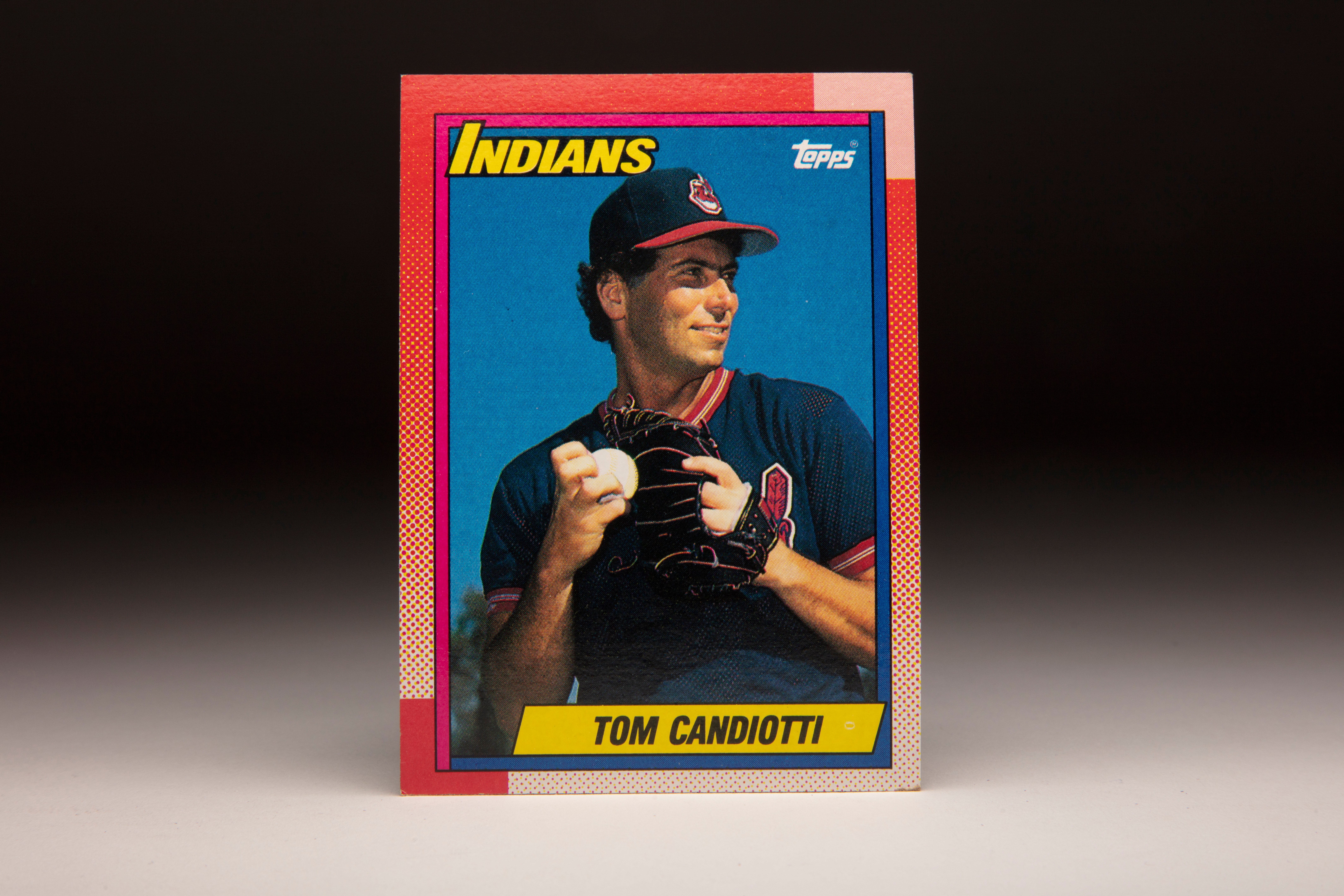
#CardCorner: 1990 Topps Tom Candiotti
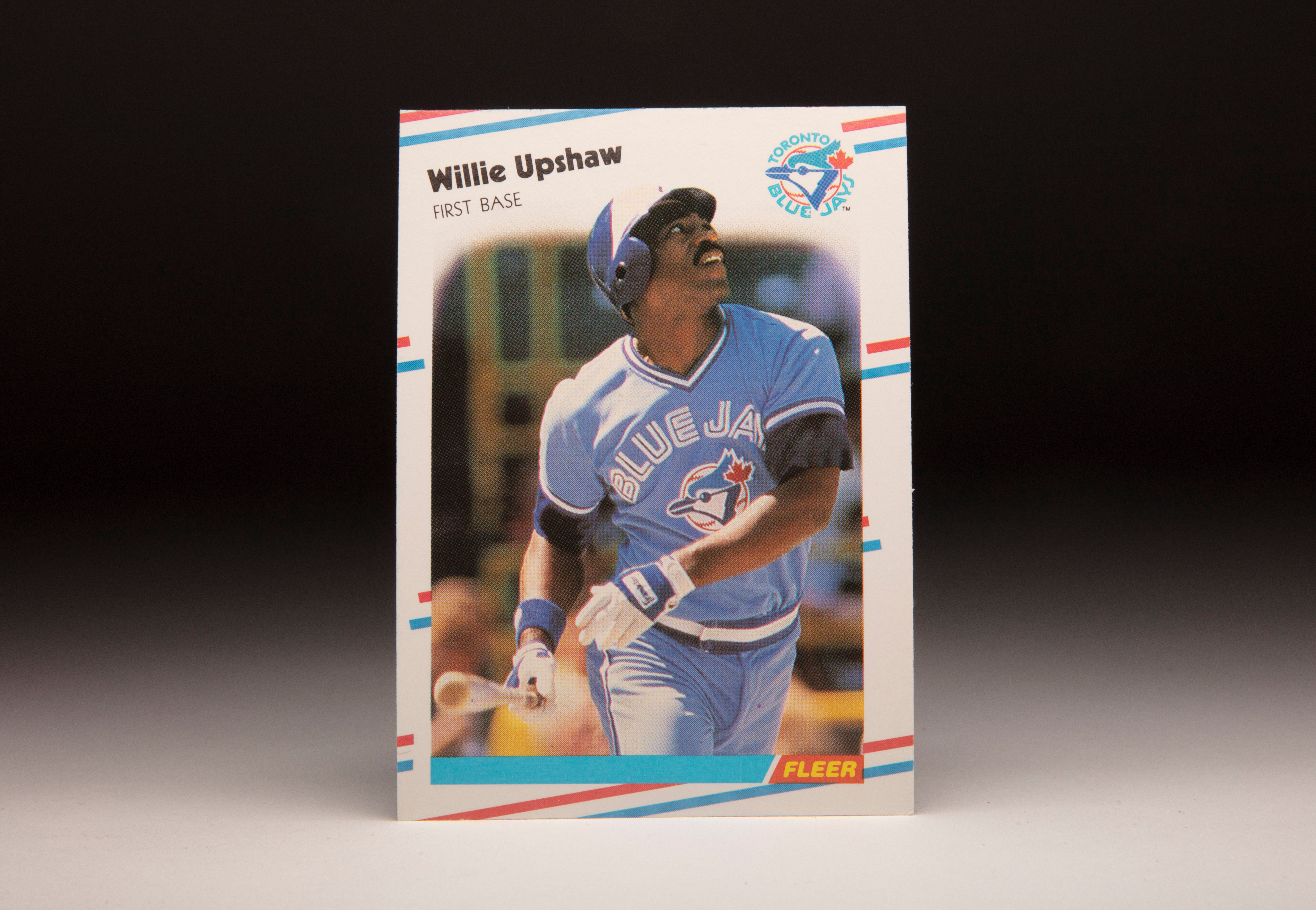
#CardCorner: 1988 Fleer Willie Upshaw
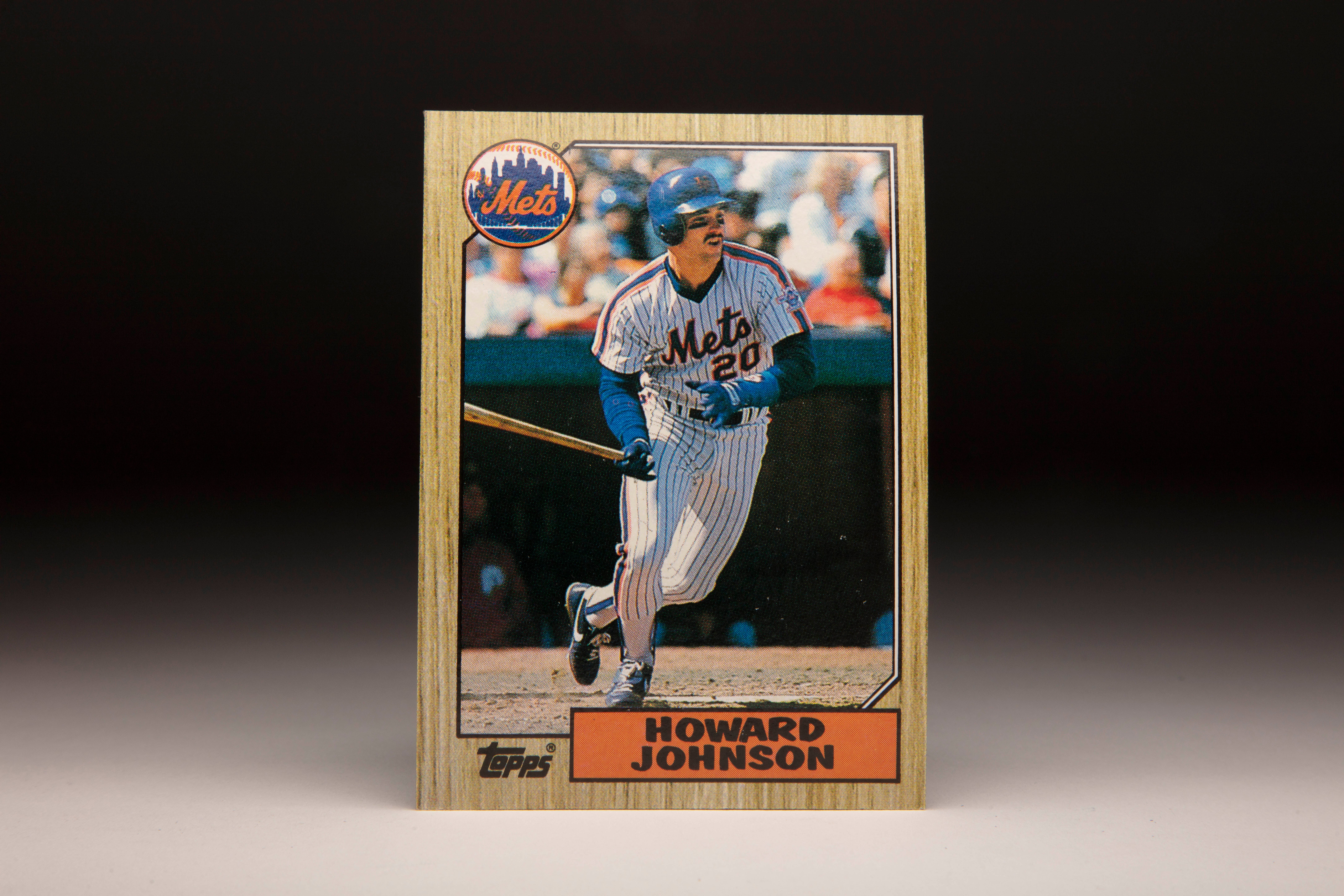
#CardCorner: 1987 Topps Howard Johnson

#CardCorner: 1990 Topps José Rijo

#CardCorner: 1990 Topps Tom Candiotti

#CardCorner: 1988 Fleer Willie Upshaw

#CardCorner: 1987 Topps Howard Johnson





